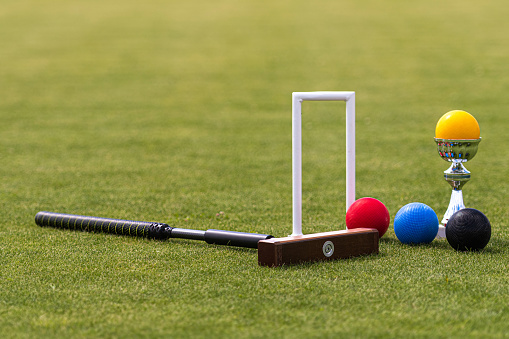General Rules of Giant Slalom
To excel in Giant Slalom, remember these rules. Respect gate setups for speed and precision. Master start position for a strong run. Perfect your turns for control. Manage speed with skill. Use quality gear for stability. Understand penalty system to avoid infractions. Prioritize safety measures. Analyze courses for strategy. Refine timing skills for success. Practice post-race etiquette for respect. These rules lay the foundation for your Giant Slalom performance but there's much more to learn about the intricacies of this thrilling alpine ski race.
Course Layout
When approaching the giant slalom course, it's important to understand the strategic layout that challenges skiers with a combination of speed and precision. The course presents a myriad of obstacles – from terrain variation to gate rhythm, each demanding a unique approach. Understanding the nuances of the terrain is vital as it directly impacts your speed and turning technique. Sharp turns on steep sections require quick changes, testing your ability to maintain control under pressure. Additionally, the gate rhythm sets the cadence for your runs, forcing you to adapt your skiing style to match the course's demands.
Snow conditions play a pivotal role in your performance, affecting your grip and overall stability. Soft snow requires a different technique compared to icy conditions, where edges need to dig in for traction. Visibility challenges further add complexity, as flat light or fog can obscure gate placements, testing your ability to rely on muscle memory and instinct. Mastering the course layout involves a deep understanding of these factors and the agility to adapt swiftly during your descent.
Gate Setup
When setting up gates in a giant slalom course, consider the importance of gate placement and spacing. The angles at which gates are positioned also play a vital role in the flow and challenge of the race. Understanding these factors is key to creating a course that tests racers' skills to the fullest.
Gate Placement Importance
Proper gate placement in giant slalom skiing is essential for maximizing speed and maintaining a smooth racing line. The importance of strategic gate setup cannot be overstated. A well-thought-out gate placement not only tests a skier's technical abilities but also requires meticulous training to master the approach. The strategic positioning of gates challenges skiers to execute precise turns while maintaining high speeds through the course. Understanding the technique behind gate placement is critical for developing a winning strategy. Training should focus on honing the skills needed to navigate gates efficiently, ensuring that each turn is executed with precision. By mastering gate placement, skiers can gain a competitive edge and improve their overall performance in giant slalom races.
Spacing Considerations for Gates
Considering the key spacing between gates is important for elite giant slalom skiers aiming to enhance their speed and precision on the course. Gate spacing plays a vital role in establishing the rhythm of your descent. Properly spaced gates allow for ideal turn timing and technique execution. Skiers must adapt their skiing style to the specific gate setup, adjusting their approach to maintain momentum while smoothly shifting between turns. The rhythm set by the gate spacing dictates the flow of the run, influencing how skiers navigate each turn. By mastering the spacing considerations for gates, skiers can fine-tune their timing and technique, ultimately leading to faster and more controlled descents down the giant slalom course.
Impact of Gate Angles
To optimize performance in giant slalom skiing, understanding the impact of gate angles in the gate setup is essential. Gate angles play a pivotal role in determining the skier's turning strategy and overall speed down the course. When approaching gates with sharper angles, a more aggressive ski technique is required to navigate the turn efficiently. Skiers must adapt their body positioning and weight distribution to maintain control and minimize time loss. Additionally, gate angles influence the choice of ski equipment, affecting the radius of the skis needed to execute smooth turns. By analyzing gate angles strategically, skiers can tailor their approach to each gate, optimizing their performance and ultimately enhancing their giant slalom skiing experience.
Start Position
Positioning yourself at the start gate is essential for a successful Giant Slalom run. The starting technique and ski positioning play a pivotal role in determining your performance. To excel, focus on maintaining a balanced stance with your weight evenly distributed between both skis. Your skis should be parallel, edges engaged, ready to propel you forward with precision as soon as the gate opens. Timing accuracy and reaction speed are paramount. Anticipate the countdown and aim to burst out of the gate with controlled aggression. Your reactions must be swift yet controlled, ensuring a powerful and smooth initiation into the course.
Achieving the prime start position requires mental readiness and physical preparedness. Visualize the course ahead, mentally rehearsing your movements. Flex your knees, lower your center of gravity, and maintain a forward-leaning stance to maximize acceleration. By mastering the start position, you set the tone for the entire run, gaining a competitive edge right from the beginning. Remember, the start is where races can be won or lost, so approach it with confidence and determination.
Turn Technique
You must remember that body position plays an important role in executing each turn effectively. Properly edging your skis is vital for maintaining control and stability throughout the course. Smooth shifts between turns are key to maintaining speed and precision on the giant slalom course.
Body Position Crucial
Understanding the pivotal role of body position in giant slalom turn technique is fundamental for achieving peak performance on the slopes. Maintaining a proper stance is critical; guarantee your knees are flexed, hips facing downhill, and arms positioned forward for balance. Correct weight distribution between your skis is vital; lean into the turn with your body aligned over the downhill ski while keeping the uphill ski light. This technique optimizes control and stability throughout each turn, allowing for smoother changes and faster speeds. By mastering body positioning, you enhance your ability to carve efficiently through the gates, minimizing resistance and maximizing momentum. Remember, your body is the key to enhancing the precision and fluidity needed for successful giant slalom skiing.
Edging for Control
Efficient edging is essential for maintaining control and precision in giant slalom turn technique. When it comes to edge carving, focus on initiating the turn by rolling your ankles to engage the edges of your skis effectively. This action helps in creating the desired turning radius. Balance control is vital in edging; make sure your weight is evenly distributed over both skis, allowing for better stability and grip on the snow. To enhance your performance, concentrate on keeping a forward stance, with your shins pressing lightly against the front of your boots. By mastering edging techniques and maintaining balance control, you can navigate the giant slalom course with confidence and finesse.
Smooth Transitions Essential
To execute precise turns in giant slalom, focus on maintaining a seamless flow between each carve, ensuring a fluid progression down the course. Smooth shifts are essential in optimizing your technique and improving overall performance. As you navigate the gates, pay attention to the moment when one turn finishes and the next begins. This shift is where you can lose or gain valuable time. By initiating the new turn smoothly and efficiently, you can maintain your speed and momentum. Practice linking your turns together with precision and finesse, allowing for a continuous and controlled descent. Concentrate on shifting your weight and edging gradually to create a seamless connection between each carve, ultimately enhancing your overall performance on the course.
Speed Control
To maintain peak performance during a Giant Slalom run, managing your speed is essential for maneuvering the course effectively and ensuring a successful descent. Speed control in giant slalom skiing is a delicate art that requires a deep understanding of weight distribution and ski pressure. As you navigate the course, your ability to adjust these factors will determine how smoothly and quickly you can conquer each gate.
Proper weight distribution plays a pivotal role in controlling your speed. By shifting your weight forward, you can increase pressure on the front of your skis, causing them to dig into the snow and slow you down. Conversely, leaning back will reduce the pressure on the front of your skis, allowing you to accelerate more freely. Mastering this balance will give you the control needed to tackle the varying terrain of a giant slalom course with confidence.
Additionally, adjusting ski pressure through subtle movements and shifts in your stance can help you regulate your speed with precision. By actively managing the pressure on your skis, you can optimize your grip on the snow and adjust your speed accordingly. This dynamic control over ski pressure is a key element in executing efficient turns and maintaining your desired pace throughout the race. Remember, in giant slalom, speed control is not just about going fast but about finding the perfect balance between velocity and stability to achieve the most effective performance.
Ski Equipment
When it comes to the aspects of ski equipment, you must prioritize vital gear, guarantee proper boot fitting, and opt for quality ski bindings. These factors play an important role in your performance on the slopes, impacting your speed control and overall stability during giant slalom races. Remember, investing in the right equipment can make a significant difference in your skiing experience and competitive results.
Essential Ski Gear
Having the appropriate ski equipment is essential for optimizing performance and safety on the slopes. Ski maintenance and gear upgrades are vital for maintaining your equipment's performance. Regularly waxing your skis and ensuring they are properly tuned can greatly impact your speed and control while maneuvering through the course. Upgrading your gear to newer models can also enhance your overall skiing experience, providing you with better stability and responsiveness. Additionally, investing in high-quality winter apparel is crucial to keep you warm and dry in varying weather conditions. Proper equipment care, such as storing your gear in a cool and dry place after use, can prolong the lifespan of your equipment. By prioritizing ski maintenance and gear upgrades, you can ensure a more enjoyable and successful giant slalom experience.
Proper Boot Fitting
Optimizing your performance and safety on the slopes begins with ensuring a proper fit for your ski boots. Proper boot fitting is essential for maximizing your ski performance. One key aspect to take into account is the boot flex, which determines the stiffness of the boot. The flex rating ranges from soft to stiff, with softer boots providing more comfort but less responsiveness, while stiffer boots offer better control and precision. Finding the right balance is vital for your skiing style and ability level. A snug fit is important to prevent foot movement inside the boot, enhancing your control over your skis. Remember, a well-fitted boot can have a significant impact on your ski performance, so take the time to make sure your boots fit correctly before hitting the slopes.
Quality Ski Bindings
To enhance your skiing performance and safety, selecting ski bindings of high quality is essential. Ski binding maintenance is pivotal to guarantee they function correctly. Regularly inspect your bindings for any signs of wear and tear, such as rust or cracks, and promptly address any issues. Proper ski binding adjustment techniques are crucial for a comfortable and secure fit. Adjusting the bindings according to your skiing style, weight, and ability level can have a substantial impact on your performance on the slopes. It is recommended to have a professional technician perform binding adjustments to ensure they are set up correctly. By maintaining and adjusting your ski bindings properly, you can enjoy a safer and more enjoyable skiing experience.
Penalty System
When considering the penalty system in Giant Slalom, it is important to understand the strict rules that govern the assessment of penalties for infractions. In Giant Slalom, the penalty system plays a pivotal role in guaranteeing fair competition and upholding the integrity of the sport. The scoring system and judging criteria are meticulously designed to evaluate racers' performances accurately.
Infractions during a Giant Slalom race can result in penalties that impact a racer's overall time. Common infractions include missing gates, straddling gates, or not following the designated course. The disqualification process is initiated when a racer accumulates a certain number of penalties or commits a severe violation. It is essential for competitors to adhere to the rules and regulations to avoid penalties that could jeopardize their standings in the race.
Understanding the penalty system in Giant Slalom is paramount for all participants. By respecting the scoring system, adhering to judging criteria, and avoiding infractions, racers can ensure a fair and competitive environment that showcases their skills and abilities accurately.
Safety Measures
Implementing stringent safety measures is essential in ensuring the well-being of athletes and maintaining the integrity of Giant Slalom races. Safety precautions such as regular course inspections, athlete briefings, and equipment maintenance are critical to minimize the risks involved in this high-speed discipline. Properly maintained equipment, including helmets, goggles, shin guards, and back protectors, is crucial to protect athletes in case of falls or collisions.
To emphasize the importance of safety, here is a table outlining key safety measures in Giant Slalom:
| Safety Measures | Description |
|---|---|
| Course Inspections | Regular assessments of the course for hazards, proper gate placement, and snow conditions. |
| Athlete Briefings | Informing athletes about course specifics, weather conditions, and any safety-related updates. |
| Equipment Maintenance | Ensuring all gear is in good condition, properly fitted, and meets safety standards. |
Inspection Protocol
Adhering to a structured examination protocol is essential for ensuring the fairness and safety of Giant Slalom races. The examination process allows racers to familiarize themselves with the course, strategize their approach, and identify any potential hazards. During course examination, you have the opportunity to study the terrain, assess gate placement, and determine the best line to take. By carefully examining the course, you can develop a plan to navigate it efficiently and effectively.
The examination process typically occurs before the race begins, giving you ample time to analyze the course and make mental notes. It is important to pay attention to key sections that may pose challenges, such as sharp turns, icy patches, or terrain variations. Additionally, understanding the course layout can help you anticipate shifts between gates and adjust your speed accordingly.
Race Timing
To optimize your performance in Giant Slalom races, mastering race timing is essential for achieving precision and speed on the course. Ski timing and precision training are key elements that can give you the edge in competitions. Understanding how to navigate the gates with precise timing will allow you to maintain your speed and momentum throughout the race.
Race strategy plays a significant role in your timing performance. Planning your approach to each gate, visualizing the ideal line, and executing quick turns are important aspects of a successful race strategy. Mental preparation is equally important; staying focused, composed, and confident will help you stay on track and make split-second timing decisions.
Investing time in honing your timing skills through practice runs and simulated race scenarios can have a notable impact on your performance on race day. By consistently working on your timing and incorporating it into your overall race strategy, you can aim for better results and faster times in Giant Slalom events.
Post-Race Etiquette
Mastering proper post-race etiquette is vital for maintaining professionalism and respect in the competitive skiing community. After crossing the finish line in a Giant Slalom race, it is important to exhibit good sportsmanship and adhere to specific guidelines for post-race celebrations and etiquette. Whether you are celebrating your victory or consoling yourself after a challenging race, it is important to remember that your actions reflect not only on yourself but also on the entire skiing community.
During awards ceremonies, it is customary to show respect for your fellow competitors by congratulating them on their performances, regardless of the outcome. Engaging in positive interactions with other racers fosters a sense of camaraderie and mutual respect within the skiing community. Remember to graciously accept both victories and defeats, as they are all part of the sport.
Frequently Asked Questions
What Are the Recommended Warm-Up Exercises for Giant Slalom Races?
To excel in giant slalom races, start with dynamic stretching, like dancers preparing for a grand performance. Add plyometric drills, akin to boxers training for a bout. Engage in these rituals for peak performance.
How Do Athletes Mentally Prepare for a Giant Slalom Race?
To mentally prepare for a giant slalom race, you can utilize visualization techniques to envision successful runs and practice breathing exercises to stay calm under pressure. These methods help focus your mind and body for peak performance.
Are There Specific Nutrition Guidelines for Athletes Competing in Giant Slalom Races?
To optimize your performance in giant slalom races, focus on nutrition guidelines that fuel your body effectively. Consider incorporating performance supplements strategically, ensuring they align with your training and competition needs for peak results.
What Are Some Common Mistakes That Beginners Make When Competing in Giant Slalom Races?
When competing in giant slalom races, beginners often make common mistakes such as leaning too far inside the gates, improper weight distribution, and not maintaining a proper tuck position. Remember, mastering proper technique is key.
How Do Athletes Recover and Prevent Injuries After a Giant Slalom Race?
To recover and prevent injuries after a giant slalom race, focus on proper warm-ups, cool-downs, and stretching routines. Utilize foam rolling, ice baths, and massages for recovery. Strengthen muscles and core to support your body.






